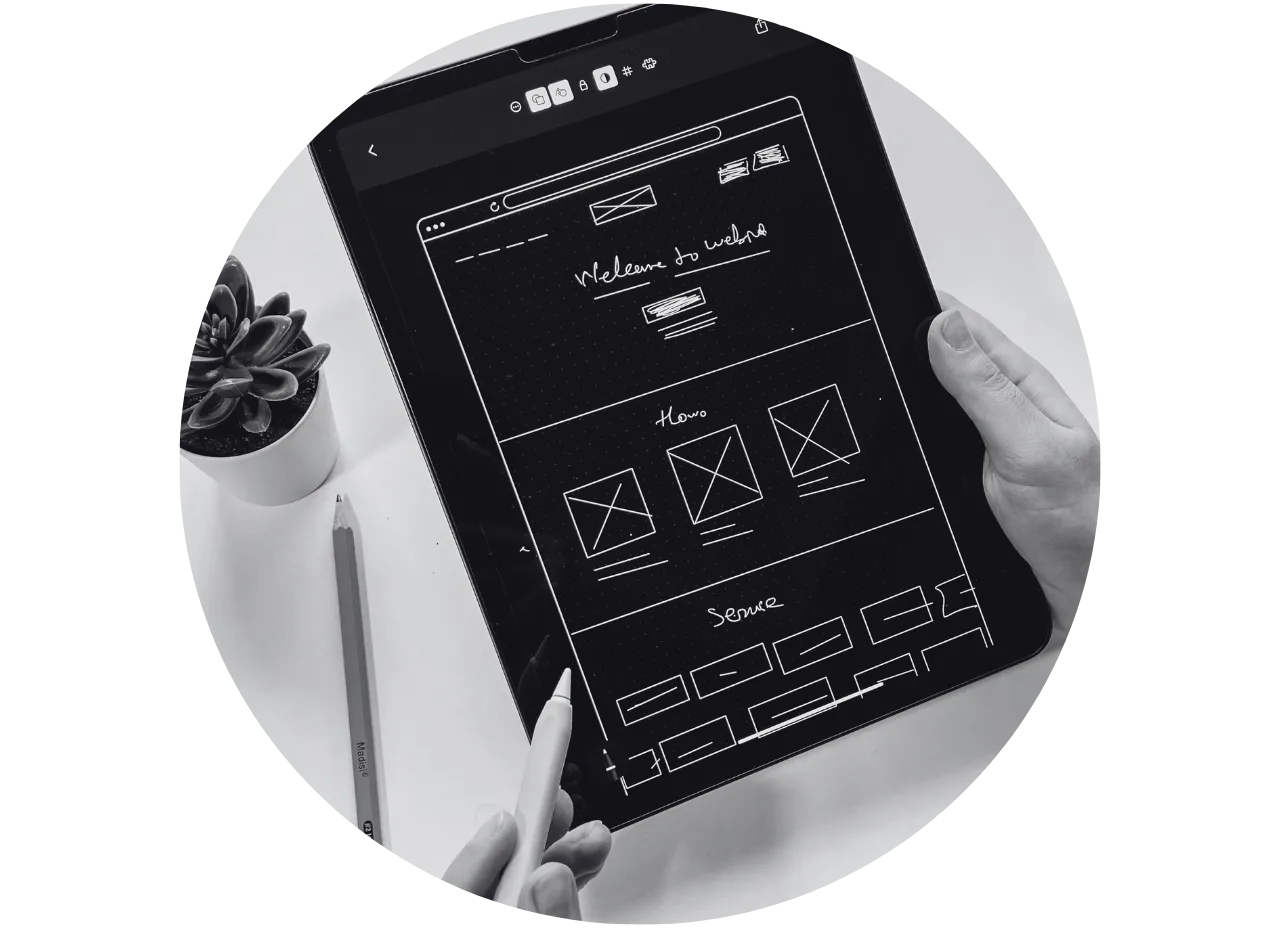Why Your Website’s UX Design is Key to Customer Retention
In today’s digital-first world, your website is often the first interaction potential customers have with your brand. Whether they’re browsing for information, making a purchase, or seeking customer support, making sure that your website is user experience (UX) designed and optimised plays a pivotal role in how users perceive your brand—and whether they stick around or leave.
At Poseidon Marketing, we’ve seen first-hand the powerful impact that good website UX design can have on customer retention. When users have a seamless, intuitive, and engaging experience on your site, they’re more likely to come back for more. In this blog post, we’ll dive deep into why UX design is so critical to customer retention and share actionable insights on how you can improve your website’s UX to increase repeat visits and build long-term loyalty.

What Is UX Design, and Why Is It Important for Customer Retention?
UX design is about creating a positive, frictionless experience for visitors on your website. It’s not just about visual aesthetics; it’s about how easily visitors can navigate your site, find what they need, and complete their goals—whether that’s purchasing a product, filling out a contact form, or reading a blog post.
A well-designed website offers a smooth and satisfying user journey. On the other hand, poor UX design creates frustration, confusion, and abandonment, which ultimately harms your brand’s reputation and drives customers away.
Here’s why UX design is directly linked to customer retention:
- Positive Experience = Repeat Visitors: When users enjoy their experience on your website, they are more likely to return, engage further, and even become brand advocates.
- Trust and Loyalty: A website that’s easy to use, loads quickly, and provides valuable content fosters trust with users. Trust is crucial in building long-term customer relationships.
- Decreased Bounce Rate: Poor UX can lead to high bounce rates, which means users leave your website almost immediately after arriving. On the flip side, a smooth experience encourages users to explore your content further, increasing the chances they will return.
How Poor UX Design Can Harm Customer Retention
Customer retention is a game-changer for any business, and poor UX design can seriously hurt your efforts. If users encounter frustrating obstacles on your site, they’ll be less likely to return and more likely to seek out your competitors.
Here are some common UX issues that contribute to poor customer retention:
- Slow Load Times – Users expect websites to load quickly, especially in an age where speed is everything. A delay of even a few seconds can have a significant impact on user experience, leading to frustration and abandonment. According to a Google study, 53% of mobile users will abandon a site if it takes longer than three seconds to load.
- Complicated Navigation – When your website’s navigation is hard to understand or cluttered, users will quickly get frustrated. A confusing layout leads to high bounce rates and decreased return visits. Clear, organised, and simple navigation makes it easy for users to find what they’re looking for and encourages them to stay longer on your site.
- Unresponsive Mobile Design – With mobile traffic accounting for more than half of global web traffic, it’s crucial that your site is mobile-friendly designed. If your website is difficult to navigate on mobile devices—whether through misaligned text, images that don’t load correctly, or buttons that are hard to click—you risk losing valuable customers.
- Lack of Clear Calls-to-Action (CTAs) – If users don’t know what to do next, they’ll often leave your site without engaging further. Clear, well-placed calls to action (CTAs) guide visitors through their journey, making it easy for them to take the next step. Whether it’s making a purchase, subscribing to a newsletter, or contacting your team, a CTA that stands out can drastically improve your retention rates.
- Inconsistent Branding and Design – A website that lacks consistency in its design elements—such as colours, fonts, and images—can confuse users and create a fragmented experience. Consistent branding helps establish trust and makes your site feel professional, enhancing overall user satisfaction.


How UX Design Enhances Customer Retention
Now that we’ve looked at what can go wrong, let’s focus on the positive impact great UX design can have on customer retention.
Here’s how improving your website’s UX design will keep users coming back:
- Frictionless Experience = Longer Engagement – UX design is all about eliminating friction. The smoother and more intuitive your website is, the longer users will stay. Simple things like fast load times, clear navigation, and easy-to-read text all contribute to a better experience. The easier it is for customers to achieve their goals, the more likely they are to return.
- Mobile Optimisation Drives Loyalty – As mobile usage continues to rise, ensuring your website provides a seamless mobile experience is essential for retaining users. A responsive website design, fast loading times, and easy navigation on mobile devices not only enhance user experience but also boost retention. Mobile-first design is no longer optional—it’s a necessity.
- Trust-Building Design Elements – Websites with strong UX design instill a sense of trust and credibility. When users feel that your website is well-organised, secure, and reliable, they’re more likely to engage further. Key trust-building elements include security badges, easy-to-find contact information, professional design, and clear privacy policies.
- Personalisation – Personalising the user experience is a powerful way to boost retention. By tailoring your website’s content, offers, or recommendations to the specific needs or preferences of users, you make them feel valued. Personalised experiences—such as showing recommended products based on browsing history—encourage customers to return and make future purchases.
- Emotionally Engaging Design – Great UX design appeals not only to users’ practical needs but also to their emotions. A website that’s visually appealing, easy to navigate, and aligned with your brand’s values helps foster a deeper emotional connection with users. This connection can lead to greater loyalty, repeat visits, and positive word-of-mouth.
How to Improve Your Website’s UX Design to Boost Customer Retention
If your website’s UX isn’t as optimised as it should be, don’t worry—you can make improvements! Here are some actionable tips to enhance your UX design and increase customer retention:A well-designed website offers a smooth and satisfying user journey. On the other hand, poor UX design creates frustration, confusion, and abandonment, which ultimately harms your brand’s reputation and drives customers away.
Here’s why UX design is directly linked to customer retention:
- Conduct User Testing – Regular usability testing with real users helps you identify pain points and areas for improvement. By observing how users interact with your website, you can make data-driven decisions to improve UX and ensure that users can easily find what they need.
- Improve Site Speed – Optimise images, reduce unnecessary scripts, and use caching to improve your site’s speed. Tools like Google PageSpeed Insights can help identify areas for improvement and suggest fixes to speed up your website. This will also assist with the SEO of your website.
- Simplify Navigation – Ensure your website’s navigation is simple and intuitive. Group related content together, use clear labels, and create a straightforward, easy-to-understand menu structure. The goal is to make it as easy as possible for users to find what they’re looking for.
- Design with Mobile in Mind – Make sure your website is fully responsive and provides a smooth, enjoyable experience for mobile users. This includes adjusting font sizes, optimising button placement, and ensuring that all elements scale appropriately on smaller screens.
- Refine Your CTAs – Test different CTA placements, copy, and colours to find out what works best for your audience. Make sure they stand out on the page and clearly tell users what to do next.
- Use Analytics to Track Performance – Regularly review Google Analytics or other analytics tools to track key metrics such as bounce rate, average session duration, and conversion rates. Use this data to assess the effectiveness of your UX design and make necessary adjustments.

Conclusion
When it comes to customer retention, great UX design is not just a luxury—it’s essential. A website that’s easy to navigate, loads quickly, and provides a personalised, engaging experience encourages users to return time and time again. By prioritising UX design, you can build stronger relationships with your audience, foster trust, and ultimately increase customer loyalty.
At Poseidon Marketing in Barnstaple, we specialise in creating websites with seamless, intuitive UX design that not only attract visitors but also keep them coming back for more. Contact us today to learn how we can help optimise your website’s UX design to boost customer retention and grow your business.
